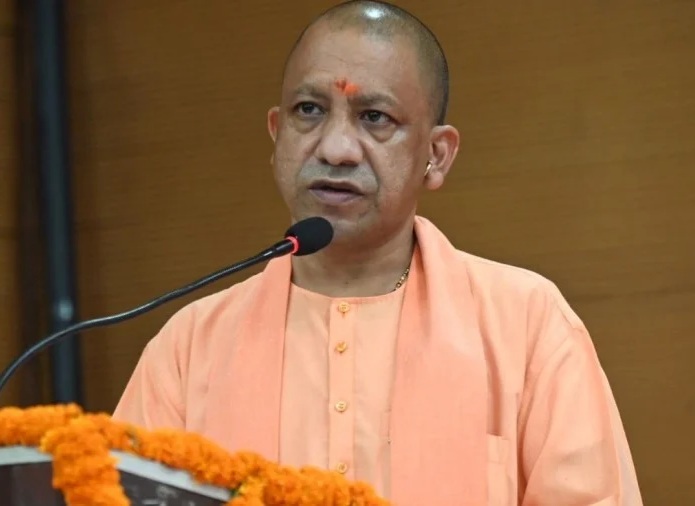Lucknow, 14 November: The impact of the promotion of industrial investment by the Uttar Pradesh government and the loans provided to micro, small and medium industries (MSMEs) and the exemption given to small and big industries during the Corona crisis is now visible.
According to a study conducted by the Economic and Number Division of the State Planning Institute, the economic progress of the state has been better in the first quarter of the financial year 2021-22, from April to June 2021. Based on this, an increase of 19.6 percent has been estimated in the Gross State Domestic Product (GSDP) of the state. This estimate is based on the constant prices for the year 2011-12.
On the basis of this, economic experts claimed that between April and June, under the guidelines of Chief Minister Yogi Adityanath, there has been an increase in the fields of agriculture, animal husbandry, fisheries, mining, water supply, manufacturing, transport, service sector and construction. Due to the work being done in the above areas, economic experts have estimated the GSDP of UP (at current prices) to be Rs 4, 05,835 crore in the year 2021-22.
State Finance Minister Suresh Khanna also agreed with this assessment of economic experts. Suresh Khanna says that in the current financial year between the prevention and treatment of corona, the economic and business activities of the state are showing more improvement than expected. Due to which, till October this year, Rs 22,109 crore more has reached the state government’s treasury than last year. If this situation continues, then a big jump in economic and business activities is expected in the remaining five months of the financial year.
The economic experts of the Earth and Number Division are also saying the same thing on the basis of their assessment. According to these experts, Uttar Pradesh’s estimate for GSDP shows a growth of 19.6 percent in the first quarter of the financial year 2021-22 (April to June 2021). In such a situation, now the GSDP (at constant prices) in the first quarter of 2021-22 is estimated to be Rs 2,30,673.02 crore as compared to Rs 1,92,896.17 crore in the same period in the financial year 2020-21. The GSDP in the first quarter of 2019-2020 was Rs 2, 57,639.79 crore. On this basis, economic experts are estimating UP’s GSDP (at current prices) to be Rs 4, 05,835 crore in 2021-22.
Economic experts say that the estimated growth of 19.6 percent in the state’s GSDP shows that the Covid-affected economy is improving in the state and will soon start showing rapid improvement.
These economic experts gave many arguments regarding the reasons for the improvement in the economy of the state.
According to experts of the Earth and Numbers Division, economic activities came to a standstill due to the lockdown imposed during the Corona crisis last year. Economic activities were started gradually after the lockdown was lifted.
In the meantime, Chief Minister Yogi Adityanath held direct talks with small businessmen to big industrialists to speed up economic activities. To promote export business, many concessions were announced. Industrialists were invited to invest in IT and logistics sector and small businessmen were arranged to get loans from banks to start business. Arrangements were also made to provide loans to the street vendors. Loan was provided to the MSME sector by running a campaign. Loans of more than two lakh crore rupees were provided to this sector.
Due to this, two crore people got employment in this sector and now this (MSME) sector is proving to be the growth engine of UP’s economy. Apart from this, he worked to connect youth with schemes related to promotion of fisheries, poultry, animal husbandry and dairy business in rural areas. These efforts of the state government showed better results.
According to experts, in the quarter April to June 2021 of the last financial year 2021-22, the value addition of crops was estimated at Rs 11819.03 crore, which is 3.1 percent more than the previous year.
Similarly, value addition of Rs.933.26 crore has been estimated in fishing and aquaculture sector which is 25.3 per cent higher than last year. The value addition in Mining and Quarrying Sector has been estimated at Rs 5304.25 crore, which is 10.6 percent higher than the previous year. The value addition in the construction sector has been estimated at Rs.27014.57 crore, which is an increase of 68.3 percent over the previous year.
Similarly, experts have predicted an increase in the work of animal husbandry, water supply, manufacturing, transport and service sectors in the same way.
Economic experts say that after dealing with the Corona crisis last year and the way Chief Minister Yogi Adityanath took steps to save life and livelihood while facing the Corona epidemic this year, economic activities have been going on in the state. Industrial production is increasing rapidly in the state due to agriculture. Due to which, during the last one year, the export business of UP in the state has increased.
While the growth has increased, the export business of states like Maharashtra, Gujarat and Tamil Nadu has decreased. Whereas, amid the Corona epidemic, the export of rice, wheat, pulses, sugar, dairy products and other food items and carpets and leather goods etc. from Uttar Pradesh increased as compared to last year.
UP became the third force in the country’s stock market
Uttar Pradesh has now become a big force in the stock market as well. The investors of UP are performing unexpectedly in the stock market. More than 50 lakh investors of UP are trading in Bombay Stock Exchange. And Uttar Pradesh has become the third force in the country’s stock market.
This new change has happened in the governance of Yogi Sarkar. Now Uttar Pradesh is followed by Maharashtra and Gujarat. UP’s 52.3 lakh investor accounts are registered in the stock market. During the last two years, a large number of investors belonging to UP have joined the Bombay Stock Exchange (BSE).
According to BSE officials, till May 31, there were a total of 69 million demat accounts in the country. Out of which 25 percent accounts are from Maharashtra while 85.9 accounts are from Gujarat.
Gujarat is followed by Uttar Pradesh at 52.3 lakh, Tamil Nadu at 42.3 lakh and Karnataka at 42.2 lakh. Apart from this, 39.5 lakhs from Bengal, 37.3 lakhs from Delhi, 36 lakhs from Andhra Pradesh, 34.6 lakhs from Rajasthan, 25.7 lakhs from Madhya Pradesh, 21.2 lakhs from Haryana, 20.7 lakhs from Telangana, 19.4 lakhs from Kerala, 15.2 lakhs from Punjab and Bihar. 16.5 lakh demat accounts.
This was not the case four and a half years ago. Then the activity of the people of UP in the stock market was negligible, because business activity was less in the state. In the year 2017, Yogi Adityanath, the head of the government, made the state sharply oriented towards development. Since then, Uttar Pradesh is now running on the path of rapid development.
UP also jumped in Ease of Doing Business
According to experts of the Department of Economics and Numbers, today Uttar Pradesh has become the state with the second largest economy of the country. Uttar Pradesh has reached the second position today, making a rapid leap in Ease of Doing Business. Now Uttar Pradesh is moving towards becoming a one trillion economy state. There has also been a significant increase in GDP and per capita income. Uttar Pradesh has become the most preferred destination for investors. Despite Corona, there has been a huge investment in UP.
Important role of MSME sector
The MSME sector of the state is playing an important role in boosting the economy of the state, the loan taken by this sector is proof of this. The figures of Prime Minister Mudra loan have also been taken the highest in this sector itself. Overall, under the guidance of Chief Minister Yogi Adityanath, Uttar Pradesh is continuing its activities in the economic sector at a rapid pace, on the basis of which 19.6 percent increase in the state’s gross product has been estimated by the Earth and Numbers Division.





